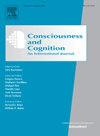Attention to direct gaze in young and older adulthood
IF 2
3区 心理学
Q2 PSYCHOLOGY, EXPERIMENTAL
引用次数: 0
Abstract
Attention to others’ direct gaze supports many social-cognitive processes (e.g., emotion recognition, joint attention) that are known to decline with age, but it remains to be established whether attention to direct gaze itself is associated with age-related changes. We address this question across two studies. In Study 1, young (n = 42) and older (n = 45) adults completed response time tasks with non-predictive direct gaze cues and predictive direct gaze cues, designed to index reflexive and volitional covert attentional orienting to direct gaze, respectively. The results showed that young and older adults equivalently shifted their attention to predictive direct gaze cues but did not shift their attention to non-predictive direct gaze cues. Study 2 was designed to assess whether this orienting to predictive direct gaze was unique to direct gaze. A separate independent sample of young (n = 43) and older (n = 44) adults completed response time tasks with predictive direct gaze cues, predictive averted gaze cues, and predictive non-social (line orientation) cues. Attention was shifted to direct gaze but neither averted gaze nor line orientation, suggesting direct gaze was unique in being voluntarily attended-to. Pooling the predictive direct gaze task data across Studies 1 and 2, we found that young and older adults both oriented to the direct gaze cues, but that this orienting effect was reduced among older adults. The findings presented here provide novel insights into how direct gaze cues uniquely capture attention in younger and older age, and show for the first time that voluntary orienting to direct gaze is reduced in older adults. Theoretical implications are discussed.
年轻人和老年人对直视的关注
注意他人的直接凝视支持许多社会认知过程(例如,情绪识别,共同注意),这些过程随着年龄的增长而下降,但注意直接凝视本身是否与年龄相关的变化有关仍有待确定。我们通过两项研究来解决这个问题。在研究1中,年轻(n = 42)和年长(n = 45)的成年人分别完成了具有非预测性直接凝视线索和预测性直接凝视线索的反应时间任务,这些线索旨在将反射性和自愿性隐蔽注意定向指向直接凝视。结果表明,年轻人和老年人将注意力转移到预测性直接凝视线索上的比例相当,但没有将注意力转移到非预测性直接凝视线索上。研究2的目的是评估这种预测直接凝视的倾向是否是直接凝视所独有的。一个独立的年轻人(n = 43)和老年人(n = 44)的独立样本完成了带有预测性直接凝视线索、预测性回避凝视线索和预测性非社会(直线方向)线索的反应时间任务。人们的注意力被转移到直视上,但没有转移视线,也没有转向视线,这表明直视是唯一一种自愿关注的行为。综合研究1和研究2的预测直接凝视任务数据,我们发现年轻人和老年人都倾向于直接凝视线索,但这种定向效应在老年人中有所减弱。这里的研究结果为直接凝视线索如何在年轻人和老年人中独特地吸引注意力提供了新的见解,并首次表明老年人对直接凝视的自愿定向减少。讨论了理论意义。
本文章由计算机程序翻译,如有差异,请以英文原文为准。
求助全文
约1分钟内获得全文
求助全文
来源期刊

Consciousness and Cognition
PSYCHOLOGY, EXPERIMENTAL-
CiteScore
4.30
自引率
8.30%
发文量
123
期刊介绍:
Consciousness and Cognition: An International Journal provides a forum for a natural-science approach to the issues of consciousness, voluntary control, and self. The journal features empirical research (in the form of regular articles and short reports) and theoretical articles. Integrative theoretical and critical literature reviews, and tutorial reviews are also published. The journal aims to be both scientifically rigorous and open to novel contributions.
 求助内容:
求助内容: 应助结果提醒方式:
应助结果提醒方式:


